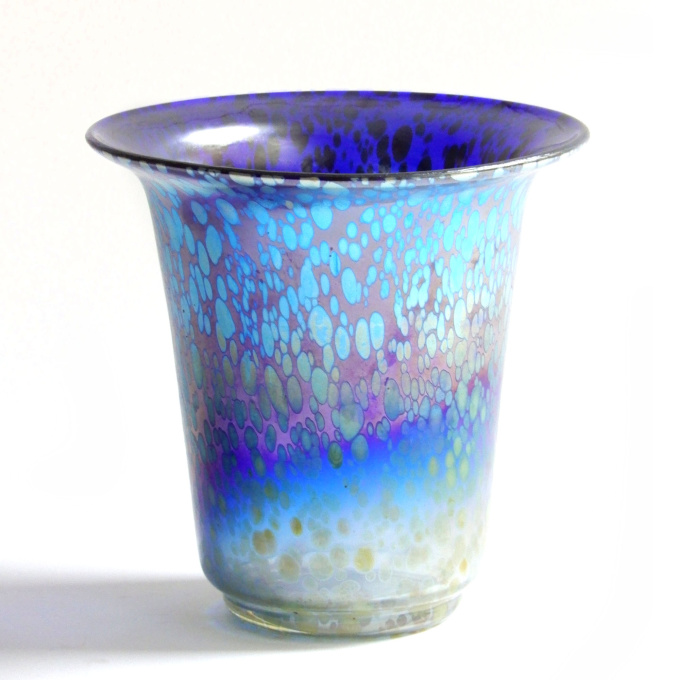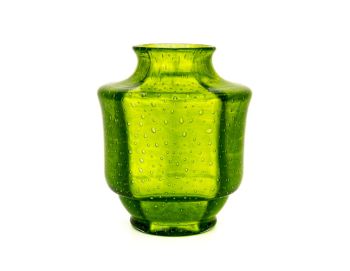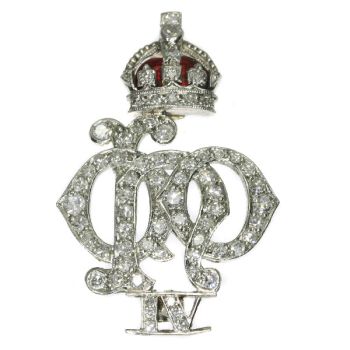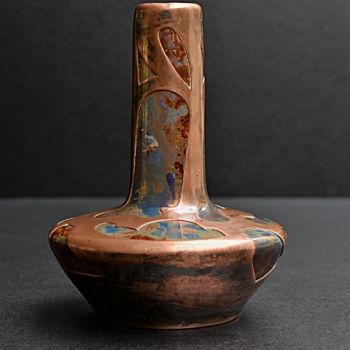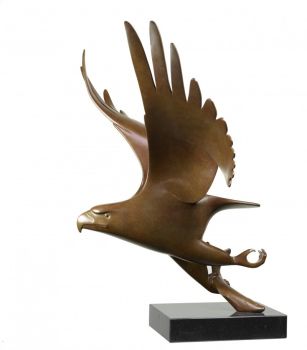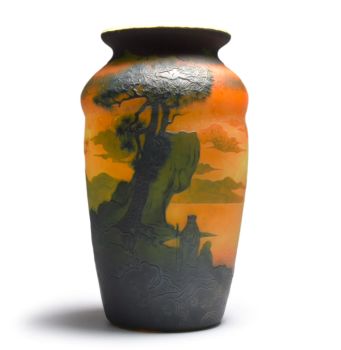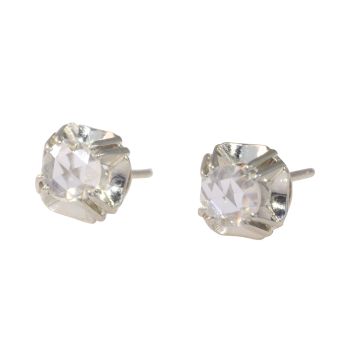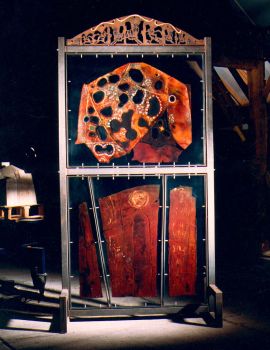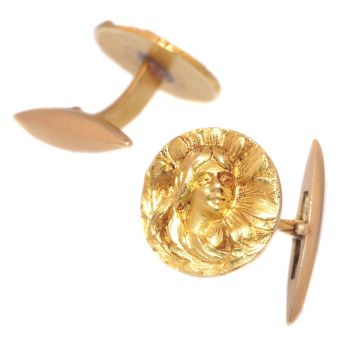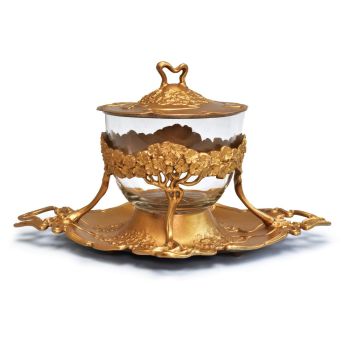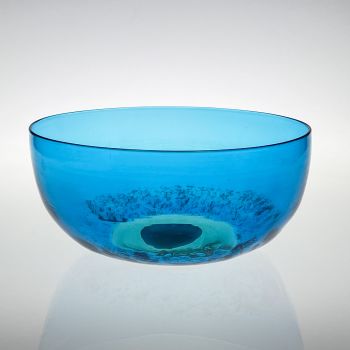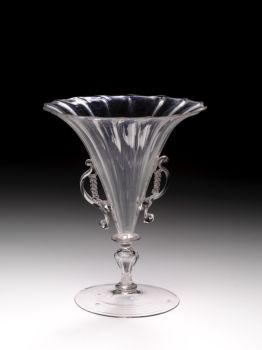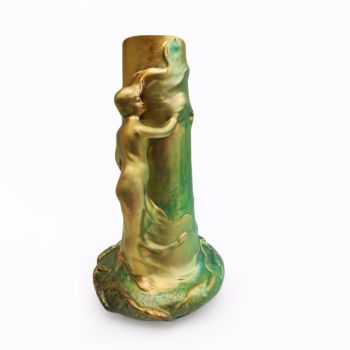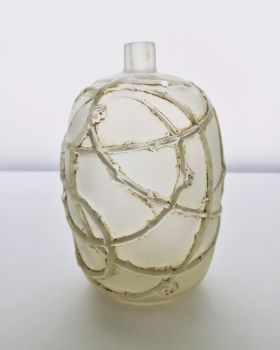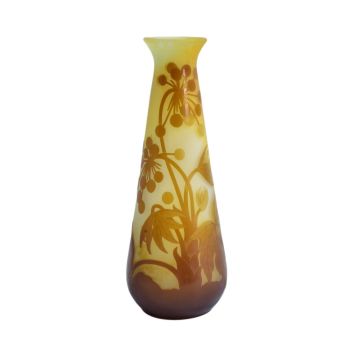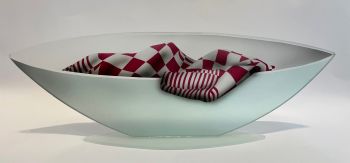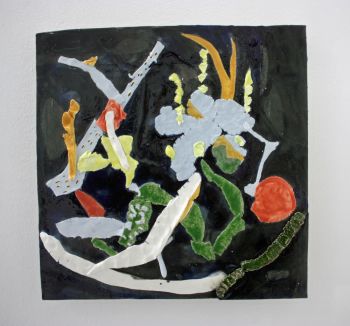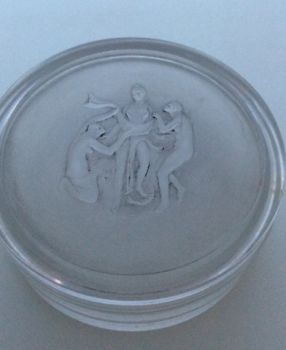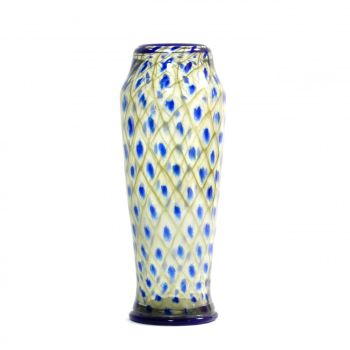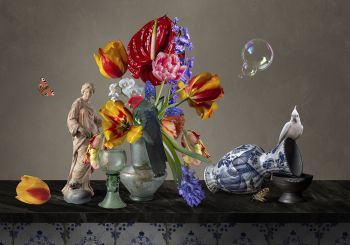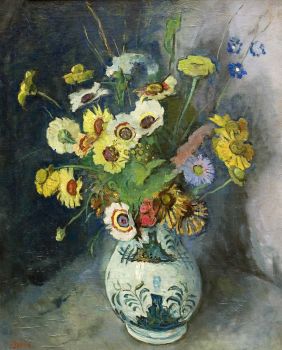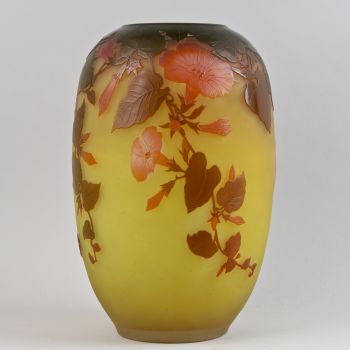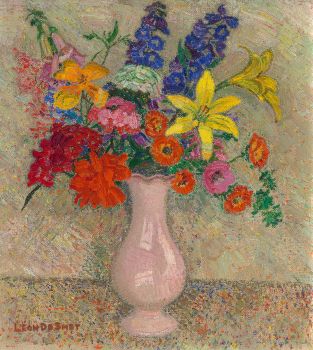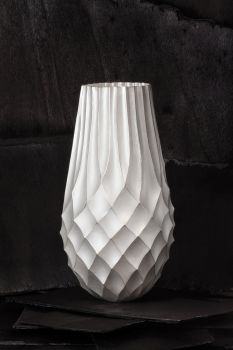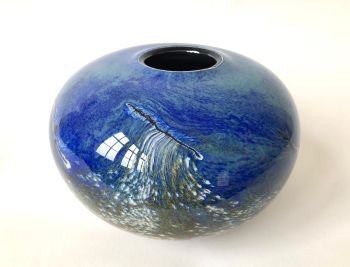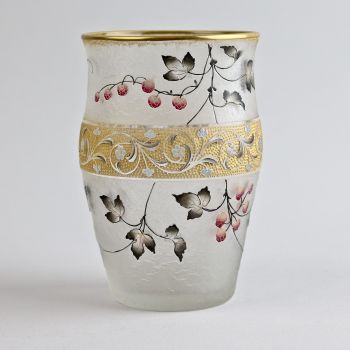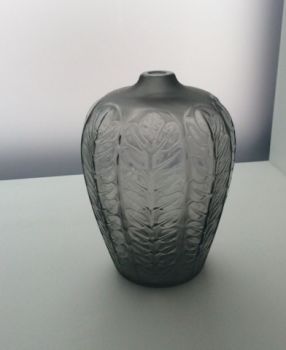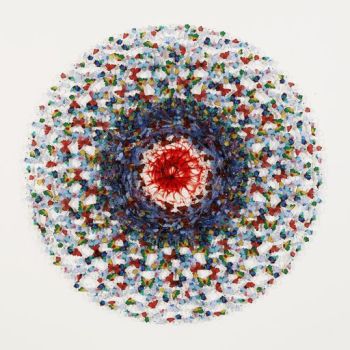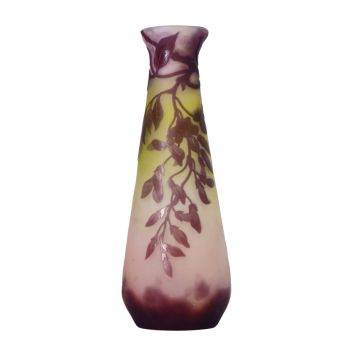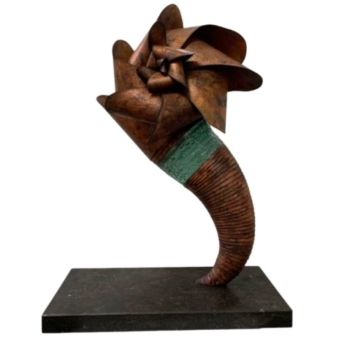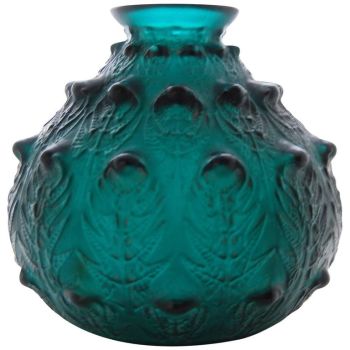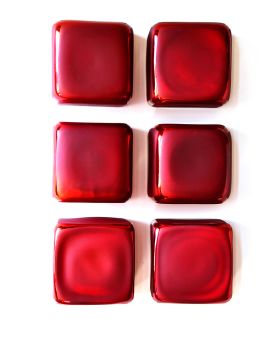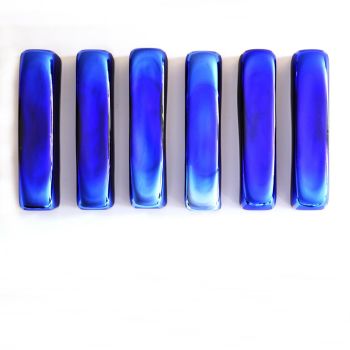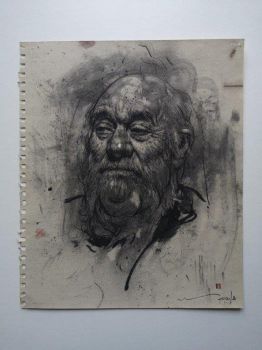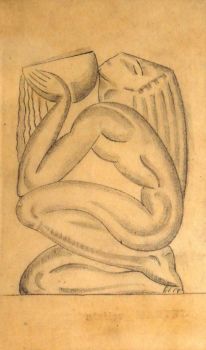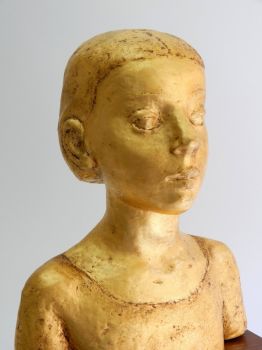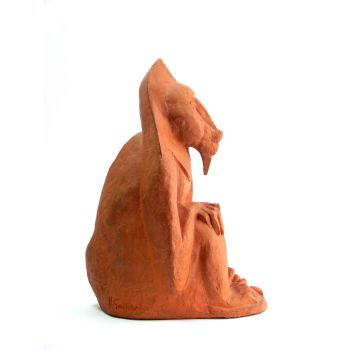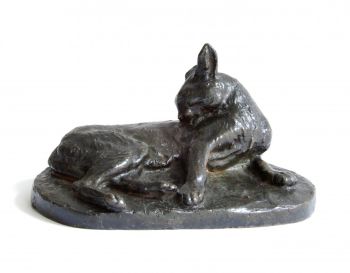Vase with papillon decor 1910 - 1920
Johann Loetz (Lötz) Witwe Klostermühle
Bicchiere
13 cm, ø 13 cm
ConditionExcellent
Attualmente non disponibile tramite Gallerease
Dille Art
- A proposito di opere d'arteBeautiful vase with intense colours. The vase has a flared neck and has a papillon decor in iridescent colours, from light to deep blue, soft green-yellow and violet. The vase is in excellent condition.
About Johann Lötz Witwe:
Lötz/Loetz was founded by Johann Lötz in 1840 and the company was located in Bohemia, in the Czech Republic, at the time Lötz belonged to the Austrian-Hungarian Empire.
In 1879 a grandson of Lötz, Max Ritter-Von Spaun, took over the business from his grandmother, he kept the name Joh. Lotz Witwe.
From that moment on, Johann Lötz Witwe really started to make a name for themselves, they developed new innovative glass techniques, but their design and the bright colours were also completely innovative. They designed special shapes and vases, high end items, which they sold in luxury stores in Vienna, Berlin, Hamburg, Paris, London, Milan, Brussels and Madrid. It soon made them very well known and famous.
It was the period when Art Nouveau or, as it was called in Germany, Jugendstil flourished. They used organic shapes, nature was their example, also for Lötz. They developed beautiful decors, resembling butterfly wings, such as the papillon decor of this vase, often the shapes were organically formed by unevenly shaping the hot glass with tongs, as also flowers are formed. But an octopus or sea shells were also used as examples for their special vases and decors.
Lötz took part in all kinds of World Exhibitions, including the famous 1900 World Exhibition in Paris where they won the grand prize. They have been awarded numerous prizes for participation in World Exhibitions. Max Ritter von Spaun also received special awards for his contribution to the glass industry. In 1883 he was allowed to use the Imperial eagle in their shield and seal, they were also allowed to put "K.K. Private Glass Factory" in front of their name. In 1889 he also received a knighthood from Franz Josef. But other royal houses also did not go unnoticed, he received the Belgian Leopold's order, and the honourable French Legion d'Honneur.
Their designs were loved, including in the United States. Lötz patented some of their special techniques, such as the one they used to make the Phänomen decor. They were able to make iridescent glass. In short, Lötz had become a household name. And it still is.
Lötz also worked closely with other glass manufacturers such as J.&L. Lobmeyer and E. Bakolowits Söhne in Vienna and with Argentor. In addition, Lötz worked closely with various artists, such as Josef Hoffmann, Koloman Moser, Franz Hofstötter, Michael Powolny and other artists of the Wiener Werkstätte. Michael Powolny was responsible for the more stylized tango vases from the 1920s.
The First World War and the end of the Austrian Empire marked a difficult period for Lötz.
Lötz existed until 1940, after a bombing raid the factory was completely burned down. After WWII, the Czech Republic belonged to the satellite states of the Soviet Union, the factory was nationalized, until it was finally closed in 1947.
Lötz glass is still very popular and is collected worldwide, their oeuvre can also be found in many museum collections.
Literature:
- Guiseppe Gappa; 'Le génie verrier de l'Europe', p. 95-107. Pierre Mardaga, Belgique, 1998, p. 95-107.
- Victor Arwas, 'Glass, Art Nouveau to Art Deco', p. 202-212. Academy Editions London 1987,
p. 202-212.
- 'Das Böhmische Glas 1700-1950', Passauer Glasmuseum, Georg Höltl, Passau 1995.
Band IV: Jugendstil in Böhmen, p. 16-133, afbeelding p.57, fig.IV.76.
- Victor Arwas, 'Glass, Art Nouveau to Art Deco', p 202-212. Academy Editions London, 1987. - A proposito di opere artista
La vetreria Loetz esisteva a Klostermuhle, in Austria, da poco più di cento anni, a partire dal 1840. Ma il suo periodo di massimo splendore fu durante la vita di Max Ritter Von Spaun, nipote dell'originale Johann Loetz che aveva fondato l'azienda.
Von Spaun rilevò l'azienda nel 1879 e la diresse fino al 1908, un anno prima della sua morte. Fu assistito da Eduard Prochaska, suo tecnico specialista, e insieme inventarono, progettarono e produssero tutta una serie di meravigliosi nuovi tipi di vetro, ottenendo numerosi brevetti e vincendo premi in tutte le maggiori esposizioni mondiali durante gli anni 1890 e i primi anni del il nuovo secolo.
L'azienda Loetz era tra i leader nel design Art Nouveau e in particolare nel vetro artistico iridescente. Il vetro "Papillon", come il vaso a sinistra, è talvolta noto oggi come vetro "macchia d'olio". Un'altra colorazione preferita di Loetz era il vetro irridizzato con scie tirate chiamato vetro "Fenomeno".
C'erano vasi irrigiati con nastri di colori metallici che si snodavano sulla superficie, e molti disegni spettacolari con scie applicate di bellissimi colori, o semplicemente tirati fuori dal corpo del vetro per formare maniglie o decorazioni.
Intorno al 1900 l'azienda iniziò a collaborare con designer esterni e alcuni grandi artisti disegnarono pezzi per Lotz, in particolare Joseph Hofmann, Koloman Moser, Maria Kirchner e Hofstatter.
Nel 1908 Loetz fu rilevata dal figlio di Max Von Spaun, anche lui chiamato Max, e sebbene stentasse finanziariamente (fallendo nel 1911 e di nuovo nel 1931) ci furono diversi grandi designer il cui lavoro fu prodotto da Loetz in quegli anni e attraverso l'arte periodo déco. Questi includevano Adolf Beckert e Michael Powolny.
Sei interessato ad acquistare questa opera d'arte?
Artwork details
Related artworks
Johann Loetz (Lötz) Witwe Klostermühle
Johann Loetz Witwe - Phänomen Genre 7773 – Orange1900 - 1910
Prezzo su richiestaAntiques Emporium
Johann Loetz (Lötz) Witwe Klostermühle
Johann Loetz Witwe – Jugendstil Cobalt Papillon vaas1900 - 1910
Prezzo su richiestaAntiques Emporium
Johann Loetz (Lötz) Witwe Klostermühle
Johann Loetz Witwe - Flamarion Titania bowl – Franz Hofstätter1900 - 1910
Prezzo su richiestaAntiques Emporium
Johann Loetz (Lötz) Witwe Klostermühle
Johann Loetz Witwe – Phänomen Genre vaas in blauw opaal – 19021902 - 1903
Prezzo su richiestaAntiques Emporium
1 - 4 / 8Johann Loetz (Lötz) Witwe Klostermühle
Johann Loetz Witwe - Phänomen Genre 7773 – Orange1900 - 1910
Prezzo su richiestaAntiques Emporium
Amalric Walter
Amalric Walter & Henri Bergé – Crabe plumier1920 - 1929
Prezzo su richiestaAntiques Emporium
1 - 4 / 24Gabriel Argy-Rousseau
Gabriël Argy-Rousseau – Crabes et Algues vase – 19201920 - 1929
Prezzo su richiestaAntiques Emporium
Artista Sconosciuto
Verre ailé vénitien1550 - 1599
Prezzo su richiestaPeter Korf de Gidts - Antiquairs
René Lalique
Una rara scatola per Nina Ricci circa 19371937
Prezzo su richiestaLennart Booij Fine Art and Rare Items
1 - 4 / 24Paulus Franciscus Kromjong
Fiori davanti ad Arearea Aka (gioia) di Gauguin'20th century
Prezzo su richiestaZebregs & Röell - Fine Art - Antiques
1 - 4 / 24Gyrinus
Verre gravé pointillé avec putti1764 - 1766
Prezzo su richiestaPeter Korf de Gidts - Antiquairs
René Lalique
Un rarissimo vaso "Fougeres" verde intenso disegnato da R. Lalique1912
€ 8.950Lennart Booij Fine Art and Rare Items
 A cura di
A cura diSilla Scheepens
Johann Loetz (Lötz) Witwe Klostermühle
Johann Loetz Witwe – Phänomen Genre vaas in blauw opaal – 19021902 - 1903
Prezzo su richiestaAntiques Emporium
1 - 4 / 24- 1 - 4 / 12

